
https://ebookmass.com/product/orthopaedic-and-traumanursing-an-evidence-based-approach-to-musculoskeletal-
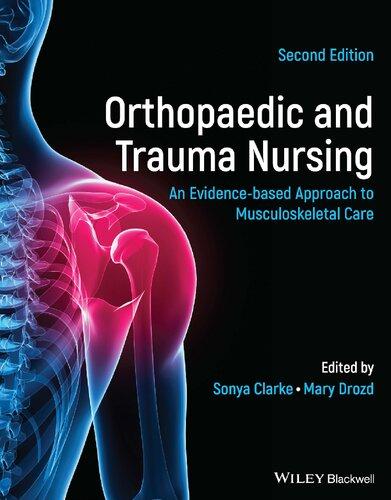
Blue-Footed Boobies: Sibling Conflict & Sexual Infidelity on a Tropical Island Hugh Drummond
https://ebookmass.com/product/blue-footed-boobies-sibling-conflictsexual-infidelity-on-a-tropical-island-hugh-drummond/
ebookmass.com
How to Design and Evaluate Research in Education, 11th Edition Jack. Wallen Fraenkel (Norman. Hyun
https://ebookmass.com/product/how-to-design-and-evaluate-research-ineducation-11th-edition-jack-wallen-fraenkel-norman-hyun/
ebookmass.com
The Pucking Fake Boyfriend: An enemies to lovers brother’s best friend hockey romance A J Summers
https://ebookmass.com/product/the-pucking-fake-boyfriend-an-enemiesto-lovers-brothers-best-friend-hockey-romance-a-j-summers/
ebookmass.com
Swan Hill T4 : Une chance à saisir Anna Jacobs
https://ebookmass.com/product/swan-hill-t4-une-chance-a-saisir-annajacobs/
ebookmass.com
Political Science N. D. Arora
https://ebookmass.com/product/political-science-n-d-arora/
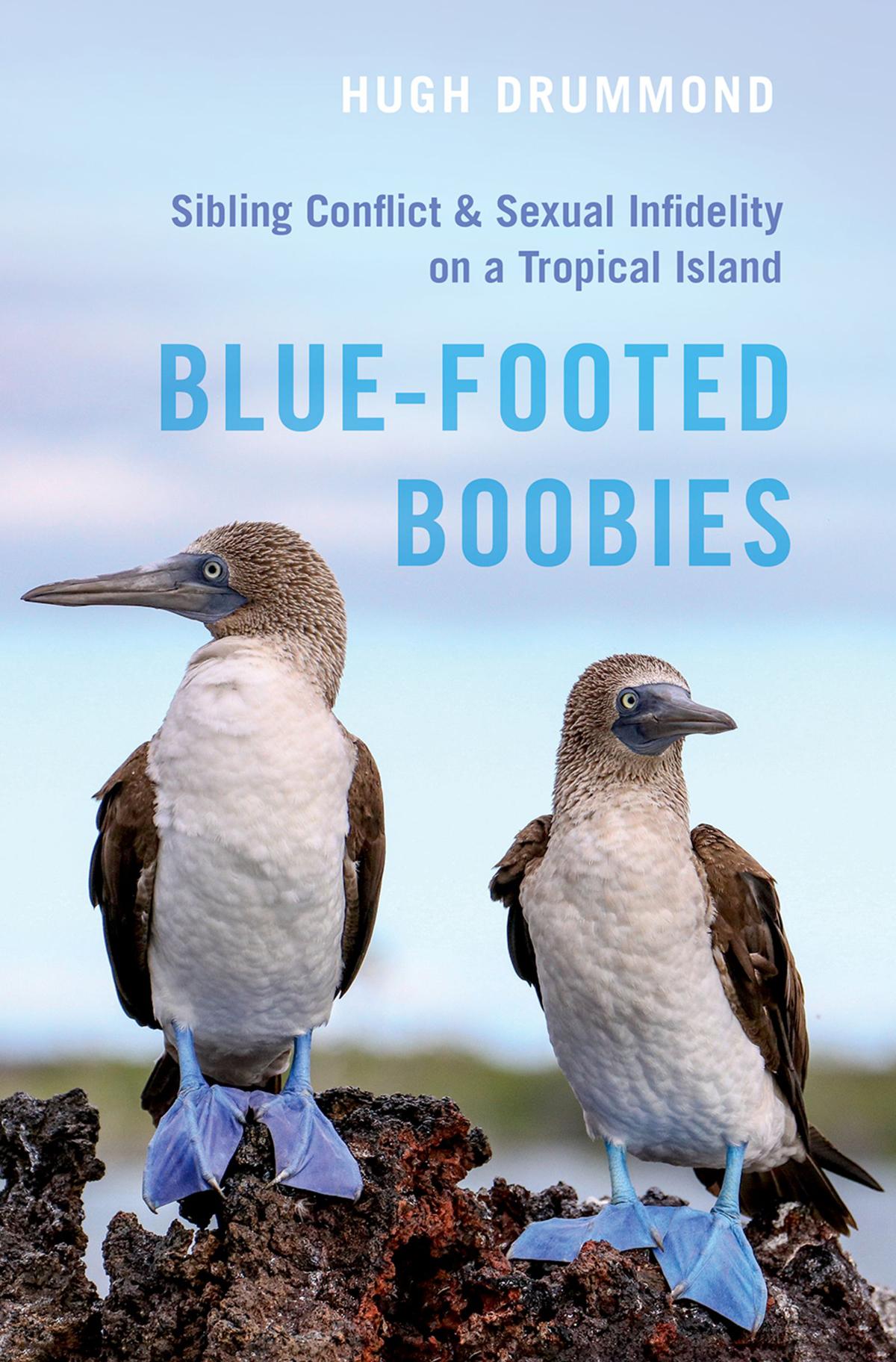
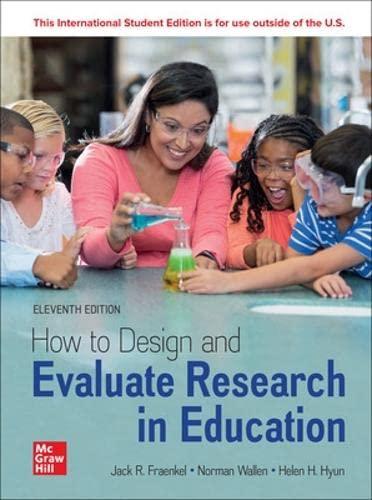


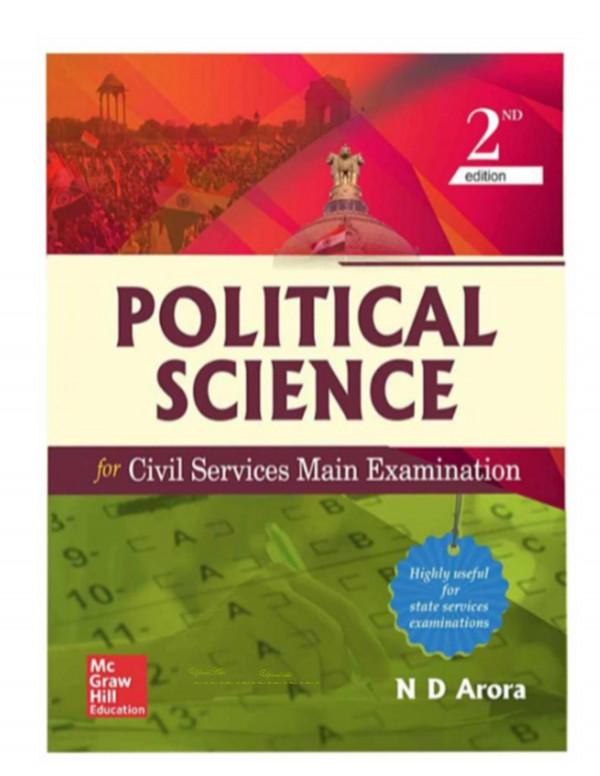
ebookmass.com
Computing: Concepts, Technology, Security, and Architecture, Second Edition Thomas Erl
https://ebookmass.com/product/cloud-computing-concepts-technologysecurity-and-architecture-second-edition-thomas-erl/
ebookmass.com
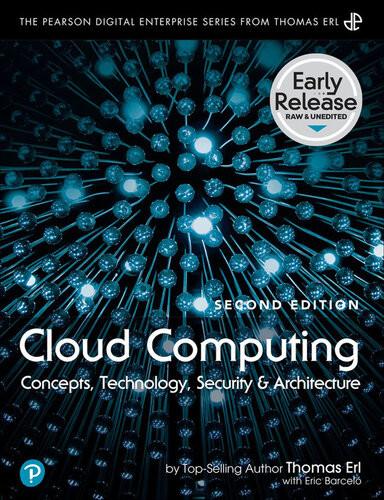
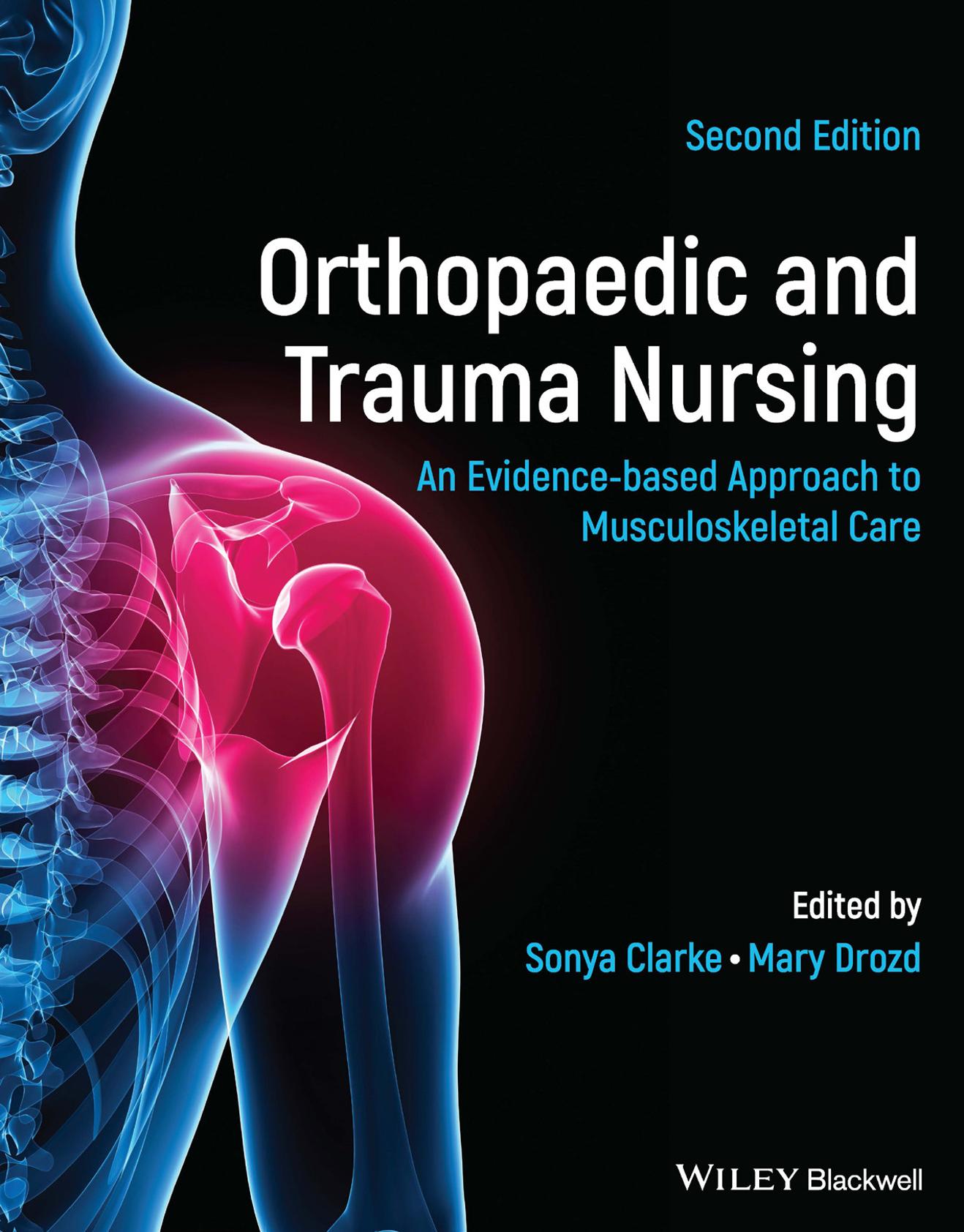
Orthopaedic and Trauma Nursing
This second edition first published 2023 © 2023 by John Wiley & Sons Ltd
Edition History
John Wiley & Sons, Ltd (1e, 2014)
All rights reserved. No part of this publication may be reproduced, stored in a retrieval system, or transmitted, in any form or by any means, electronic, mechanical, photocopying, recording or otherwise, except as permitted by law. Advice on how to obtain permission to reuse material from this title is available at http://www.wiley.com/go/permissions.
The right of Sonya Clarke and Mary Drozd to be identified as the authors of the editorial material in this work has been asserted in accordance with law.
Registered Offices
John Wiley & Sons, Inc., 111 River Street, Hoboken, NJ 07030, USA
John Wiley & Sons Ltd, The Atrium, Southern Gate, Chichester, West Sussex, PO19 8SQ, UK
For details of our global editorial offices, customer services, and more information about Wiley products visit us at www.wiley.com.
Wiley also publishes its books in a variety of electronic formats and by print-on-demand. Some content that appears in standard print versions of this book may not be available in other formats.
Trademarks: Wiley and the Wiley logo are trademarks or registered trademarks of John Wiley & Sons, Inc. and/or its affiliates in the United States and other countries and may not be used without written permission. All other trademarks are the property of their respective owners. John Wiley & Sons, Inc. is not associated with any product or vendor mentioned in this book.
Limit of Liability/Disclaimer of Warranty
The contents of this work are intended to further general scientific research, understanding, and discussion only and are not intended and should not be relied upon as recommending or promoting scientific method, diagnosis, or treatment by physicians for any particular patient. In view of ongoing research, equipment modifications, changes in governmental regulations, and the constant flow of information relating to the use of medicines, equipment, and devices, the reader is urged to review and evaluate the information provided in the package insert or instructions for each medicine, equipment, or device for, among other things, any changes in the instructions or indication of usage and for added warnings and precautions. While the publisher and authors have used their best efforts in preparing this work, they make no representations or warranties with respect to the accuracy or completeness of the contents of this work and specifically disclaim all warranties, including without limitation any implied warranties of merchantability or fitness for a particular purpose. No warranty may be created or extended by sales representatives, written sales materials or promotional statements for this work. The fact that an organization, website, or product is referred to in this work as a citation and/or potential source of further information does not mean that the publisher and authors endorse the information or services the organization, website, or product may provide or recommendations it may make. This work is sold with the understanding that the publisher is not engaged in rendering professional services. The advice and strategies contained herein may not be suitable for your situation. You should consult with a specialist where appropriate. Further, readers should be aware that websites listed in this work may have changed or disappeared between when this work was written and when it is read. Neither the publisher nor authors shall be liable for any loss of profit or any other commercial damages, including but not limited to special, incidental, consequential, or other damages.
Library of Congress Cataloging-in-Publication Data
Names: Clarke, Sonya, editor. | Drozd, Mary, editor.
Title: Orthopaedic and trauma nursing: an evidence-based approach to musculoskeletal care / edited by Sonya Clarke and Mary Drozd.
Other titles: Orthopaedic and trauma nursing (Clarke)
Description: Second edition. | Hoboken, NJ: Wiley-Blackwell, 2023. | Includes bibliographical references and index.
Identifiers: LCCN 2022029474 (print) | LCCN 2022029475 (ebook) | ISBN 9781119833383 (paperback) | ISBN 9781119833390 (adobe pdf) | ISBN 9781119833406 (epub)
Subjects: MESH: Orthopedic Nursing–methods | Trauma Nursing–methods | Musculoskeletal System–injuries | Wounds and Injuries–nursing | Evidence-Based Nursing
Classification: LCC RD753 (print) | LCC RD753 (ebook) | NLM WY 157.6 | DDC 616.7/0231–dc23/eng/20220819
LC record available at https://lccn.loc.gov/2022029474
LC ebook record available at https://lccn.loc.gov/2022029475
Cover Design: Wiley
Cover Image: © SCIEPRO/Getty Images
Set in 9.5/12.5pt STIXTwoText by Straive, Pondicherry, India
12 Wound Management, Tissue Viability and Infection 140
Jeannie Donnelly and Alison Collins
13 Key Conditions and Principles of Orthopaedic Management 159
Elaine Wylie and Sonya Clarke
Elective Orthopaedic Surgery 180
Rebecca Jester, Sandra Flynn, and Mary Drozd
15 Musculoskeletal Oncology over the Lifespan 201
Helen Stradling
Principles of Trauma Care 217
Fiona Heaney, Yvonne Conway, and Stefanie Cormack
17 Principles of Fracture Management 240
Julie Craig, Sonya Clarke, and Pamela Moore
18 Fragility Fractures 256
Julie Santy-Tomlinson and Karen Hertz
19 Fragility Hip Fracture 268
Karen Hertz and Julie Santy-Tomlinson
20 Spinal Cord Injury 288
Sian Rodger
21 Soft Tissue, Peripheral Nerve and Brachial Plexus Injury 304
Julie Craig, Beverley Gray Linnecor, and Martyn Neil
22 Key Issues in Caring for the Child or Young Person with an Orthopaedic or Musculoskeletal Trauma Condition 319
Sonya Clarke
23 Common Childhood Orthopaedic Conditions, Their Care and Management 331
Julia Judd 24 Fracture Management in the Infant, Child and Young Person 349
Elizabeth Wright
25 Key Fractures Relating to the Infant, Child and Young Person 362
Thelma Begley and Sonya Clarke Index 376
Dr Stefanie Cormack, PhD, MSc, PGCAPHE, FHEA
Senior Lecturer, Faculty of Education, Health and Wellbeing, University of Wolverhampton, UK
Stef is a Senior Lecturer and research lead for paramedic science for the Faculty of Education, Health and Wellbeing at the University of Wolverhampton. She qualified as a paramedic and worked as an operational helicopter emergency medical service (HEMS) critical care paramedic, gaining her Master’s degree before moving into paramedic education. She has research interests in out-of-hospital cardiac arrest management, human factors and prehospital trauma/HEMS. Her PhD was a mixed methods approach to designing and evaluating a behavioural marker system for paramedic non-technical skills when managing an out-ofhospital cardiac arrest.
Mrs Julie Craig, MB BCh BAO (Hons.), MSc (Clin. Ed), MRCS MSc (Ortho. Eng.)
Orthopaedic Specialty Doctor, Royal Victoria Hospital, Belfast Health & Social Care Trust, Belfast, UK
Julie Craig is an orthopaedic specialty doctor in the Royal Victoria Hospital, Northern Ireland’s regional trauma centre, in the Belfast Health & Social Care Trust (BHSCT). Julie graduated as a doctor from Queen’s University Belfast (QUB) and is a member of the Royal College of Surgeons of Edinburgh. She has completed a Master’s degree in clinical education at QUB and a Master’s degree in orthopaedic engineering at Cardiff University. She is the former undergraduate medical educational lead for fractures in BHSCT, and currently teaches quality improvement and leadership skills to doctors in BHSCT and teaches postgraduate nurses specialising in trauma and orthopaedics. She has a special interest in clinical data analysis, is the specialty improvement lead for the BHSCT trauma database, and is a member of the Royal College of Physician’s Falls and Fragility Fracture Audit Programme (FFFAP) board and the National Hip Fracture Database Advisory Group. She has presented her work on the Royal Victoria Hospital’s fracture and major trauma patients internationally and has been the recipient of the prizes for best presentations from the British Trauma Society, the Irish Hip Fracture Database Annual Meeting and the British Orthopaedic Association (Bone and Joint Journal Prize).
Peter Davis MBE, Cert.Ed, BEd (Hons), RGN, DN, ONC, MA
Associate
Professor (retired), Emeritus Editor International Journal of Orthopaedic and Trauma Nursing
During the late 1980s, Peter held posts in pre- and postbasic nursing education with a specific remit for orthopaedic nurse education. In 1989, he gained a Master’s degree in nursing and education. In 1994, his first book, as editor and contributor, was published, Nursing the Orthopaedic Patient From 1992 to 1994, he was chair of the RCN Society of
Orthopaedic and Trauma Nursing, and he has spent several years as a committee member. He was founding editor of the Journal of Orthopaedic Nursing and is now Emeritus Editor of the new International Journal of Orthopaedic & Trauma Nursing. He has presented numerous papers at national and international conferences. A personal philosophy of practice being primary to theory has kept him close to nursing care throughout his career and ensures an emphasis on research utilisation and evidence-based practice. In 2000, Her Majesty Queen Elizabeth II conferred on him the honour of Member of the Order of the British Empire (MBE) for services to orthopaedic nursing.
Dr Jeannie Donnelly, PhD, Dip. Wound Healing & Tissue Repair, BSc (Hon’s) Health Studies incorporating the RCN Nurse Practitioner Professional Award, RN, ONC
Lead Nurse Tissue Viability, Belfast Health & Social Care Trust, Honorary Senior Lecturer, School of Nursing, Queens University Belfast, Belfast, UK
Jeannie qualified as a Registered Nurse in Belfast in 1988 and spent the first 8 years of her career working in the Fracture Trauma Unit of the Royal Victoria Hospital. During her time in this specialty, she became passionately interested in wound healing and tissue repair. In 1996, Jeannie became the first Tissue Viability Nurse on the island of Ireland, and in 2010, the Lead Nurse for Tissue Viability within the Belfast Health & Social Care Trust.
Dr Mary Drozd, Senior Teaching Fellow, Aston Medical School, Aston University, England, UK
Registered Nurse, Doctorate in Health and Wellbeing, MSc Health Sciences, BA (Hons), PGCE (Higher Education), ENB 219, Senior Fellow of the Higher Education Academy
Mary is a Registered Nurse with over 30 years’ experience in orthopaedic and trauma nursing. She has worked as a staff nurse, sister, ward manager and advanced nurse practitioner in a variety of orthopaedic and trauma settings prior to joining a Higher Educational Institute in 2004. She has maintained strong clinical links alongside contributing to National Institute for Health and Care Excellence (NICE) guidance as a clinical specialist.
As an elected national steering committee member for the Royal College of Nursing (RCN) Society of Orthopaedic and Trauma Nurses (SOTN) from 2009- 2013 and re-elected in 2013-2017, Mary led the revision and further development of the RCN SOTN national competences for orthopaedic and trauma practitioners in 2012 and more recently was on the working group which published the current national competences in 2019.
Mary successfully completed a Professional Doctorate in Health and Wellbeing in 2019. Her research focused on adults with intellectual disabilities and their experiences of orthopaedic and trauma hospital care. The findings from
the study have been disseminated via national and international conferences and papers from her thesis have been published in peer-reviewed and open access journals. Mary has undertaken the role of Book Review Editor, Assistant Editor and is currently the Social Media Editor and a peer reviewer of manuscripts for the International Journal of Orthopaedic and Trauma Nursing. In 2021, Mary was awarded Senior Fellowship of the Higher Education Academy
Professor Sandra Flynn, PhD, MSc, BA (Hons), PGCE, RN, ONC Chester Medical School, University of Chester Professor Flynn qualified at the Chester District School of Nursing, the Robert Jones and Agnes Hunt Orthopaedic Hospital Oswestry and the University of Liverpool in general nursing, orthopaedic and trauma nursing, and education. Sandra started her academic career as a senior lecturer at the University of Chester in 2018 and is responsible for leading on the Doctor of Medicine programme at Chester Medical School. Both her Master’s and PhD are orthopaedic based. Sandra worked for the National Health Service (NHS) for 38 years, during which time she advanced her knowledge, skills and expertise in the field of trauma and orthopaedics. She held the title of Consultant Nurse in Orthopaedics at the Countess of Chester NHS Foundation Trust. Introduced in 2008, this was the first consultant nurse post in the country working within this field of practice. Sandra undertook clinical practice at an advanced level and exercised higher levels of judgement, discretion and decision making in clinical care using an advanced practice competency framework. She was one of only two nurses at that time trained to perform hand surgery in the UK. She functioned as an expert resource-providing consultancy both internal and external to the Trust in the field of orthopaedics, monitoring and improving standards of care through clinical audit, dissemination of research, supervision of practice, teaching and provision of support for professional colleagues. Sandra is a former member of the Royal College of Nursing Society of Orthopaedics and Trauma Nursing committee, acting as Nursing Advisor to the Department of Health workforce planning sub-group, 18-week orthopaedic pathway. She has worked as a Specialist Advisor to the Care Quality Commission (CQC), the independent regulator of health and social care in England. Her role with the CQC was to undertake inspections of acute hospital trusts to check the quality of the orthopaedic and trauma services they provide.
Beverley Gray Linnecor, MSc Advanced Practice, BSc (Hons) Nursing Studies, PgCert TLHE, RGN, ONC, Dip CN, Cert in CBT, Cert in Counselling Skills, Professional Cert in Management Beverley has many years of experience in both trauma and elective orthopaedic nursing. She was formerly the
Clinical Nurse Specialist for the Scottish National Brachial Plexus Injury Service and Specialist Lecturer in Orthopaedics at the University of the West of Scotland. Beverley has presented papers internationally and published for books and journals. Beverley is now based in Guernsey, Channel Islands and is currently Clinical Editor with the International Journal of Orthopaedic and Trauma Nursing
Sinead Hahessy, RGN, BA, MA (Soc. Sc.)
Lecturer and Postgraduate Programme Director, School of Nursing & Midwifery, National University of Ireland, Galway, Ireland
Sinead has 20 years’ experience as a lecturer in nurse education. Her clinical nursing career includes experience in orthopaedics, gerontology, emergency care and theatre nursing. With a postgraduate background in sociology, she has contributed to the professional and educational development of undergraduate and postgraduate nursing in Ireland through involvement in curriculum design and teaching. Her teaching and research interests are in qualitative research, orthopaedic/theatre nursing, professional development in nursing and academic practice, reflective practice and arts-based pedagogy.
Fiona Heaney, RGN, MHSc (Nursing/Education), PG Diploma (Nursing Studies/Orthopaedics), PG Diploma (Clinical Teaching) Clinical Nurse Specialist in Bone Health Galway University Hospitals, Galway, Ireland
Fiona started out working in orthopaedic trauma and has been involved in the care of patients following fracture for over 20 years. She worked as Clinical Facilitator/ Practice Development Co-ordinator for Orthopaedic Nursing in Galway University Hospitals and later transferred into the role of Clinical Nurse Specialist in Orthopaedic Trauma. During her time working with people following acute fractures she developed an interest in promoting bone health and fracture prevention. She currently works as Clinical Nurse Specialist in Bone Health and is part of the Fracture Liaison Service in Merlin Park Hospital Galway.
Karen Hertz, MSc, BSc, DPSN, RGN, ENB219
Advanced Nurse Practitioner, Royal Stoke University Hospital, University Hospitals of North Midlands, Stoke-on-Trent, UK
Karen is a registered nurse, working in the National Health Service as an advanced nurse practitioner in a trauma and orthopaedic unit. She qualified in 1987 and since then has worked for 35 years in a variety of roles in trauma and orthopaedics, but her passion is for fragility fracture nursing and interdisciplinary care. She has been actively involved in both the Global and National Fragility Fracture Networks (FFNs) since their inception. She is currently leading the
Diploma Orthopaedic Programme run in conjunction with the Royal College of Surgeons in Ireland.
Paul McLiesh, RN, BN, GDip Orth, MNSc, PhD candidate
University of Adelaide, Australia
Paul is a senior lecturer; he completed his initial training as a registered nurse at the Royal Adelaide Hospital in 1989 and has worked in a number of roles over the subsequent 23 years. He has been lecturing in the Adelaide Nursing School at the University of Adelaide since 2010 and is an education specialist through the Adelaide Education Academy. He is the Education Officer for the Centre for Evidence-based Practice South Australia, an affiliated centre of the Joanna Briggs Institute, and was president of the Australian and New Zealand Orthopaedic Nurses Association (2013–2015) and the South Australian Orthopaedic Nurses Association (2014–2016). He is a deputy editor of the International Journal of Orthopaedic and Trauma Nursing and a PhD candidate focusing on the use of structure nursing assessment tools and their value for use by nurses with varying levels of expertise teaching.
Pamela Moore, PgCert Specialist Practitioner in Orthopaedic Nursing, BSc (Hons), RGN
Nursing Development Lead, Belfast Health & Social Care Trust, Belfast, UK
Pamela has many years of experience in both managerial and ‘hands on’ roles within a busy dedicated fracture clinic/unit and as a development lead for orthopaedic and fracture trauma practice. Pamela is passionate about orthopaedic and fracture trauma care and values ongoing nurse education. Pamela is a frequent specialist lecturer on the orthopaedic and fracture trauma programmes and Objective Structured Clinical Examination examiner at Queen’s University Belfast.
Mr Martyn Neil, FRCS, DipSEM (GB&I), MSc Clinical Director – Orthopaedic Surgery, Consultant Trauma and Orthopaedic Surgeon, Belfast Health & Social Care Trust, Belfast, UK
Martyn has worked in the Royal Victoria Hospital and Musgrave Park Hospital Royal from 2013. He has held the appointment of Clinical Director – Orthopaedic Surgery since 2021.
Lynne Newton-Triggs, MA, RGN, Pre-Assessment Sister Bedford Hospital NHS Trust, Bedford, UK
Lynne currently works as a pre-assessment nurse manager at a district general hospital with her main focus being the orthopaedic specialty. She qualified as an RGN in 1984 and has since worked in both elective and trauma environments as a ward sister and specialist nurse. She completed the English National Board 219 at the Robert Jones and Agnes Hunt Orthopaedic Hospital in 1987 and has since
completed a BA (Hons) degree in Nursing Studies and an MA in Healthcare Ethics.
Jean Rogers, RGN, BSc (Hons), MSc, ONC, Cert. Ed (Fe) Practice Education Facilitator for the Open University Jean qualified as an RGN in 1988 from Salford NHS Foundation Trust. She has worked in a number of areas, including elective orthopaedics, acute trauma and ENT, rheumatology and endocrinology, acute medicine and acute rehabilitation. She undertook the orthopaedic course at the Robert Jones and Agnes Hunt Orthopaedic Hospital in 1991 where she was in the last group to undertake the 12-month course and in her spare time completed a Certificate in Higher Education. Following this Jean held the posts of senior staff nurse, junior sister and lecturer/ practitioner, and completed a BSc (Hons) in Nursing Practice and an MSc in Professional Development. She is co-author of the Oxford University Press book Handbook of Orthopaedic and Trauma Nursing as well as numerous articles. Her main interests lie in orthopaedics, nurse education and the politics of nursing, and she takes an active role in these areas, being a member of the orthopaedic forum, the practice educator’s special interest group and the RCN Education Forum. Jean’s current post is as academic assessor and practice tutor for the Open University, where she believes that she has the best of both worlds educating and supporting the nurses of the future in the practice setting.
Dr Julie Santy-Tomlinson (Co-editor of the first edition), PhD, RGN, RNT, MSc, BSc (Hons)
Julie has been Editor of the International Journal of Orthopaedic and Trauma Nursing since 2007. She has a clinical background in orthopaedic and trauma nursing with a focus on trauma care, older people, fragility fracture, tissue viability and wound care. She has published numerous articles and chapters related to many aspects of orthopaedic and trauma nursing. She has worked in nursing education since 1995.
Helen Stradling, MSc, BA (Hons), ENB 931, M01750, ENB 237 Sarcoma Specialist Nurse and Support Line Manager, Sarcoma UK, London, UK
Helen qualified from the University of Birmingham in 1998. From there she took up the post of staff nurse at the Nuffield Orthopaedic Centre in Oxford. It was here she was able to mix her passion for orthopaedics and oncology as the sarcoma patients were nursed on the ward. During the first few years on the ward, Helen began to increase her knowledge relating to sarcoma and undertook study in both oncology and orthopaedics. In 2004, the Nuffield Orthopaedic Centre became one of five national centres for the care of bone and soft sarcoma, and it was at this point
Foreword
Welcome to the second edition of Orthopaedic and Trauma Nursing: An Evidence-Based Approach to Musculoskeletal Care. Since the publication of the first edition the world has faced one of its most serious challenges to health with the COVID-19 pandemic, which has impacted on so many of us individually and as healthcare professionals. Orthopaedic and trauma care has been significantly impacted, with many elective procedures being cancelled, patient consultations being delivered remotely using telemedicine and staff being deployed outside of the speciality. It is important to take a moment to reflect and remember family, friends and colleagues who have been affected by COVID-19.
The first edition of this book received a tremendous amount of positive feedback from students, practitioners and educators globally regarding how it influenced patient care and contributed to practitioners’ knowledge and competence. I am delighted to say that the second edition builds on this solid platform, providing essential updates and including contributions from a wide range of practitioners, educators and researchers with many years of expertise in orthopaedic and trauma care from many parts of the globe. I have had the privilege to work with many of the contributors through my role as Deputy Editor of the International Journal of Orthopaedic and Trauma Nursing and being a member of the guideline development group for the Royal College of Nursing Society of Trauma and Orthopaedic Nursing competency document, and can attest to their expertise and passion for orthopaedic and trauma care.
Every chapter has been reviewed and updated to include the latest evidence-based practice, policy and guidelines. Changes to practice since the first edition include the global implementation of enhanced recovery pathways aiming to shorten hospital length of stay and ensure safe and effective discharge and rehabilitation. Enhanced recovery pathways are based on interdisciplinary teams working in partnership with patients and their families, and embrace shared decision making between practitioners and patients. Rehabilitation has also become embedded in many enhanced recovery pathways to optimise patients’ health status prior to elective surgery. Increasingly, patients are spending less time in the inpatient setting with more shared models of care with primary and community services.
Technology continues to provide opportunities to work in new ways, including patient consultations for follow-up assessment being carried out remotely using tele-medicine, which has enabled patients to continue to receive expert care when face-to-face consultations were not possible due to COVID-19. This has required practitioners to develop new skills in assessment and consultation when not having the patient in the same room and has also required patients to engage with practitioners in a different way. Technology is also supporting patients with rapid and easier access to information and monitoring. Many orthopaedic and trauma teams have developed apps that patients can access to gain information about their condition, treatment and care, and can also be used to support patients with their rehabilitation and exercise regimens.
Specialist and advanced practice roles continue to develop within the speciality globally, making a significant impact on services such as fragility fracture and osteoporosis treatment and care, and there is a growing realisation of the need to increase health promotion and prevention in orthopaedic conditions and to address the issue of rising rates of obesity and its detrimental impact on the musculoskeletal system.
My vision for this text is that it will find its way onto wards and departments where staff and students can dip into it to check best practice, and ultimately that it influences the quality of patient care and safety. I also hope that the book becomes a core text on the reading lists of specialist orthopaedic programmes globally and a useful resource for undergraduate nursing and therapy students. I am fortunate to have networks in orthopaedics in the UK, Hong Kong, Denmark and the Middle East, and can attest to this book having relevance and value to practice and education globally. I will certainly be using the book on a regular basis and if you are looking for an orthopaedic and trauma text to support evidence-based contemporary practice this is a must-read.
Rebecca Jester Head of the School of Nursing, Royal College of Surgeons in Ireland, Medical University Deputy Editor, International Journal of Orthopaedic and Trauma Nursing
Preface
Welcome to the second edition of this book. Orthopaedic and trauma care remains a highly specialised aspect of healthcare focused on the person with musculoskeletal problems or injury and following orthopaedic surgery. Such care is delivered across the lifespan, i.e. birth to death, in a wide range of community and hospital settings. The skills required for effective, evidence-based practice must be developed through a regard for the knowledge and evidence base for practice coupled with development of competence and expertise. This area of healthcare shares generic skills but encompasses specialist skills like no other. The aim of this 25-chapter edition is to provide practitioners working in orthopaedic and musculoskeletal trauma settings with the evidence, guidance and knowledge required to develop their skills and underpin effective practice.
This book continues to reflect the focus on the practice of musculoskeletal care as well as putting a specific focus on the evidence base for that practice. It builds on the first edition and differs with a larger focus on fragility fractures across two chapters, 18 and 19. All other chapters have been updated and modified by either their original author(s) or new co-authors from clinical practice and/or higher education. For example, we are delighted to welcome Mrs Julie Craig (Chapters 17 and 20) and Mr Martyn Neil (Chapter 20) from the Trauma and Orthopaedic Department, Royal Victoria Hospital, Belfast, as well as paramedic Dr Stefanie Cormack (Chapter 16) and Paul McLiesh, an Education Officer for the Centre for Evidence-based Practice in South Australia, who has revamped Chapter 2. The editors and contributors have again tried to not achieve the impossible in providing information about all of the available knowledge on a given topic, but offer a pedagogical approach to teaching and learning or, more simply, building blocks for extending knowledge and understanding the issues that drive safe, effective practice. The book once more provides relevant information about key theory and summaries of the evidence base underpinning all the main aspects of orthopaedic and trauma practice. This approach will enable the practitioner to easily gain an understanding of the
existing evidence base for their practice. This will ensure that the book is relevant for those studying for a degree as well as those clinicians practicing in developing and advanced orthopaedic and trauma practitioner roles. Evidence is rarely out of date, but it is sometimes superseded. One danger with this approach in this book, therefore, is that the evidence base is likely to move on as time progresses, so it is important that the practitioner is also encouraged to seek more up-to-date evidence through knowledge of how to access and appraise it.
Because the focus of this text is on evidence-based practice, summaries, or digests, of the available evidence as well as reference to relevant and seminal research support each chapter. This will enable the practitioner to focus on the evidence essential for modern practice. The book is not only mindful of the person’s lifespan but also of equality, diversity and inclusion, for example of those with a learning disability. Whilst much is on the care of the adult, a proportionate amount of content is transferable and purposely includes sections focusing specifically on the infant, child and young person and on older people with orthopaedic conditions following surgical intervention and after injury.
Although the title of the book reflects a focus on nursing care of the orthopaedic and trauma patient, it also aims to provide a wealth of useful and thought-provoking information for other practitioners working in the orthopaedic and trauma setting. Equally, the book is aimed at practitioners outside the United Kingdom (UK), where the editors are based.
Part I of this edition again provides an overview of the key issues that relate to orthopaedic and trauma nursing practice. It considers the theory underpinning orthopaedic care and places it in context with the history and development of practice in the musculoskeletal care environment. An important aspect of this is a discussion of how the evidence base for orthopaedic trauma practice has developed, and how the reader might develop skills in seeking out and evaluating evidence. There is also an overview of how professional and practice development, based on theoretical knowledge and evidence, can lead to ensuring and developing competence
and effective practice. Integral to this introductory section is an overview of the musculoskeletal system that will enable the practitioner to further develop their knowledge of anatomy and physiology, which can then be applied to the other sections of the book. Rehabilitation begins at the patient’s very first contact with healthcare services and the central concepts within, and practice of, rehabilitative care are also considered.
Part II focuses on six specific aspects of practice, which although generic, take on a specific specialist focus in the musculoskeletal care setting. Consideration of general and specialist assessment of the patient, casting, traction and external fixation, prevention and management of complications and patient safety, nutrition and hydration, pain assessment and management, and wound management and tissue viability are considered specifically within the context of orthopaedic and trauma care. These aspects of care, along with the key principles discussed in the previous part, need to be applied to the practice advice provided in the remainder of the book.
Part III considers the care of the patient with musculoskeletal conditions not attributed to trauma, but to degeneration of the bones, joints and soft tissue, with a specific focus on arthropathies such as osteoarthritis. The section considers the management of these conditions with a specific focus on elective surgery, which constitutes much of the need for orthopaedic care in the non-emergency setting.
Part IV provides an overview of the principles and practice of care of the patient following musculoskeletal trauma and injury. It begins with a discussion of the principles of trauma care, providing the practitioner with important knowledge to underpin safe and effective trauma care practice in both the emergency situation and subsequent care. This is followed by specific consideration of the principles of fracture management and care and then by specific consideration of fractures in the older person with a focus on
fragility fractures of the hip. This is followed by an overview of the care of the person with spinal cord injury aimed specifically at practitioners who provide that care in the general hospital setting. Finally, there is a brief overview of the knowledge required to care for the patient with soft tissue and nerve injury, including brachial plexus injuries.
Part V refers to the first part of the lifespan; it provides an overview of key concepts and fundamental issues that relate to the neonate, infant, child and young person. The material is specific to this client group and values the expertise of children’s nursing relating to skeletal growth and development, person- and family-centred care, safeguarding/non-accidental injury, and pain management. This is followed by key information relating to the assessment and management of common children’s musculoskeletal conditions that the practitioner may come across in everyday practice. A review of fracture healing, diagnosis and classification then follows before the complexities of diagnosing and treating children’s fractures, considering the immature and developing skeleton, are discussed along with the principles of conservative and surgical treatment.
We hope that the readers of this book will use the text as a general reference source for maintaining and developing their knowledge, but that they will also extend that knowledge by accessing the further reading and seeking new material that is relevant to their own learning needs through online and traditional sources of information. We hope that this will help to ensure orthopaedic and trauma practice will remain safe, effective and evidence-based.
Finally, we would like to thank Dr Julie Santy Tomlinson, co-editor of the first edition, for her continued support and contribution to the second edition, especially around the co-development of fragility fracture in the older person.
Sonya Clarke and Mary Drozd Belfast and Birmingham
